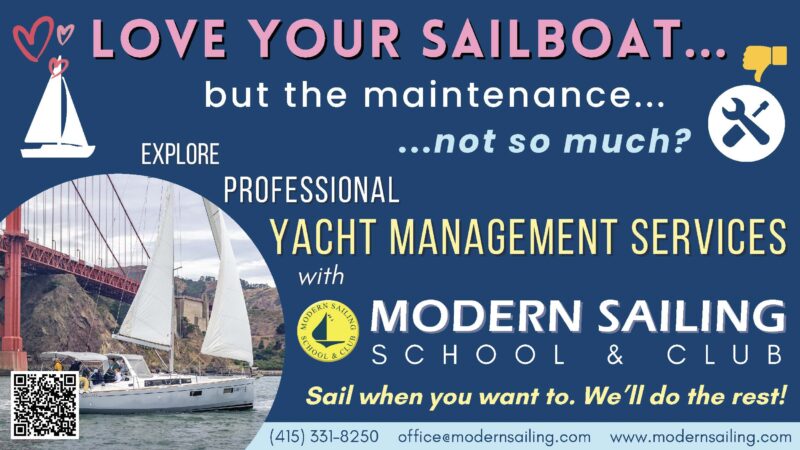
Boots on the Ground in America’s Cup Park, Barcelona!
¡Hola! It’s boots on the ground here in Porta Vela and America’s Cup Park, Barcelona, Catalonia. More breeze has finally seen its way here as yesterday’s first day of the Louis Vuitton Cup and the UniCredit Youth AC (UYAC)’s last day felt more like an average afternoon on San Francisco Bay. The wind limit was actually exceeded twice (brings back memories)!
In Catalan: Més brisa finalment ha vist que arriba aquí, ja que el primer dia d’ahir de la Louis Vuitton Cup i l’últim dia de l’Unicredit Youth AC en realitat es va sentir més com una tarda mitjana a la badia de San Francisco. ¡Ja que el límit de vent es va superar dues vegades (ens recorda)!
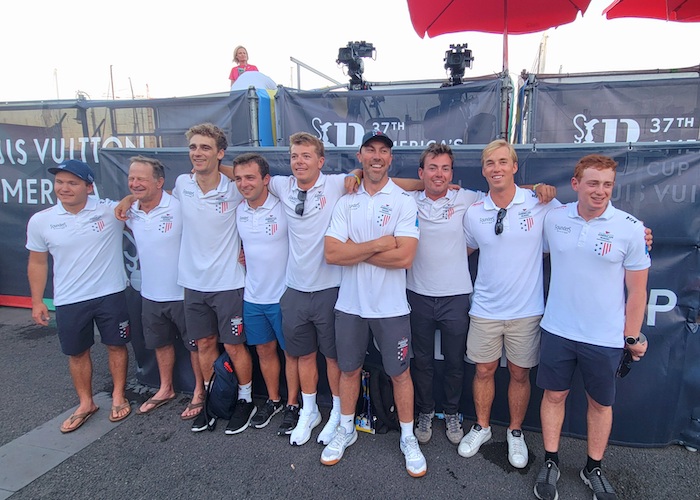
It was a bittersweet day for the American Magic Youth Team as they fell short against Luna Rossa Prada Pirelli in their match race for the UniCredit Championship in a winner-take-all final. (Va ser un dia agredolç per a l’American Magic Youth Team, ja que es va quedar curt contra Luna Rossa Prada Pirelli en la seva cursa per al Campionat Unicredit en una final amb un guanyador.)
The Italian young guns’ generational talent dominated the UniCredit Youth America’s Cup Final with a comprehensive victory over NYYC American Magic in a high-adrenaline six-leg race. They sailed in winds up to 18 knots with speeds up to 47 knots and some Banzai Pipeline waves to win by 36 seconds. Led by the mercurial Marco Gradoni, undoubtedly a name for the future of America’s Cup racing for Italy, and with the outstanding talents of co-helmsman Gianluigi “Gigi” Ugolini and trimmers Rocco Falcone and Federico Colaninno, Luna Rossa Prada Pirelli were simply a class apart, leading from start to finish. The team showed consistent and conservative front-running after capitalizing on an early start-box entry penalty for NYYC American Magic.
As with the grownups, there was no magic for American Magic as they started off on the back foot copping a penalty for arriving late on port entry, something that Patriot has made a habit of over the last few years. But the kids did us all proud with an excellent series, and with three of the four onboard the AC 40 from Wisconsin, they all have bright futures on the water with American Magic or elsewhere.
Led by Harry Melges IV (yes, Buddy’s grandson), who is absolutely a chip off the old block, the team’s leadership would be wise in following Emirates Team New Zealand’s “blueprint” of moving the “youngsters” up to the big boat.
“First off, huge congratulations to Luna Rossa on a great race. They sailed flawlessly, and it was an honor to compete against them,” said Harry IV. “I couldn’t be prouder of our American Magic team; we fought hard, stayed focused, and left everything out on the water.”
It was in 2013 in San Francisco when Peter Burling and Blair Tuke won the Red Bull Youth America’s Cup, and a short four years later won the Auld Mug in Bermuda.
“This moment is important because we worked a lot for this and now we have achieved our goal,” Luna Rossa Prada Pirelli’s Gradoni said. “I really want to thank everyone, the coach, the shore team, the tech team, everyone really because it was super-hard to get here at this level. But we did it and it’s an amazing feeling.”
The Italians ruled the day though, as the LRPP Youth Team were fearless and dominant. They took home the trophy in a wild celebration at AC Park, portending a microcosm of the frenzy that would ensue and what it would be like if Italy won the America’s Cup. Ciao, bella!!

On a day when the UYAC was moved up to a noon start time because of wind and wave concerns, basically a typical day on the Bay, the start of the Louis Vuitton Cup final was moved back, and boy, it didn’t disappoint! With a solid southwesterly “Garbi” breeze that topped the upper wind limit of 21 knots more than once, it was survival sailing at times, with the sailors opting for double-board round-ups at the leeward gates and minimizing maneuvers throughout the eight-leg races. With speeds in excess of 52 knots on the bearaways at the windward mark, this was top-class match racing from two of the world’s finest America’s Cup teams.The AC 75s were not really built for 2-meter chop and large rollers from North Africa.

Both boats survived intact as LRPP’s Jimmy Spithill and Francisco Bruni hit the line in force against INEOS Britannia, led by Sir Ben Ainslie and newcomer behind the wheel Dylan Fletcher, who replaced Giles Scott last month in a bold move by the team.
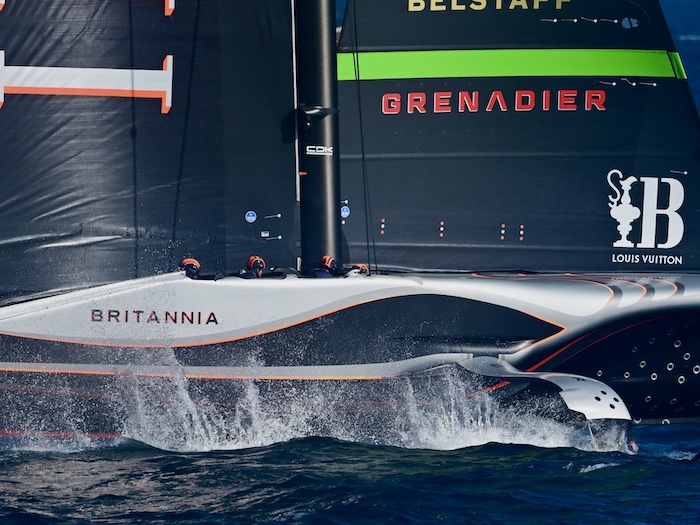
The foiling monohulls smashed through the waves, flying above the water toward the first gate as the Italians took control and never relinquished their advantage to win by 30 seconds.
“We’ve seen it all along: These are two very evenly matched teams, and we were expecting a tough series and today showed that both teams can win races,” said Spithill. “I thought the performances were pretty similar; they made a couple of errors, maneuver-wise, in that first race and we were able to step out. In the second race they sailed it very clean so performance-wise there not a whole lot in it, but obviously we’ll be checking on that tonight.
“These conditions were definitely up there with big waves, right on the limit on the breeze, so a mistake is, as always, just around the corner,” Spithill continued. “In that first one they were hoping we would make a couple and then vice versa, but that’s what you want, you want to be pushed, and you want a fight.”
The second race was the complete opposite of the first as the Brits evened the score 1-1 winning by just 18 seconds, which actually both teams considered to be a victory, with today being a lay day.
Hurricanes John and Helenes’ Simultaneous Coastal Impact
Imagine going down to your slip on the Bay after 140-mph winds and a storm surge with water levels reaching 10 feet above normal. It’s hard to imagine in Sausalito or San Diego, yet that’s what residents of Florida’s Big Bend region are facing this morning due to Hurricane Helene. The storm and rain have moved inland, though that also means the rivers upstream are filling beyond capacity, so the downstream shoreline will continue to feel the impacts as all that fresh water attempts to reach the sea. According to reports, at least 20 people have died through the flooding, mudslides and destruction.
Also in the Atlantic, Hurricane Isaac is between Bermuda and the Azores, and Tropical Storm Joyce is spinning north in the mid-Atlantic. Along the Pacific coast of Mexico it is Hurricane John that continues to cause damage.
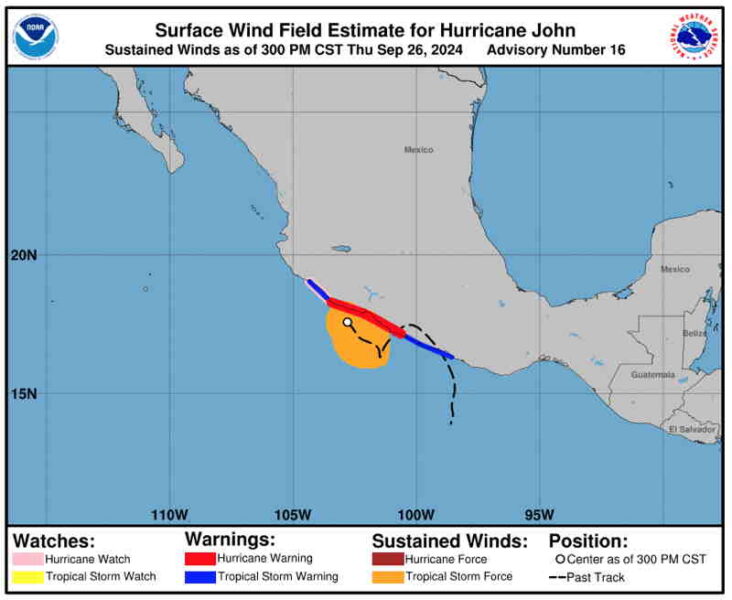
Hurricane John hit the southern coast of Mexico as a Category 3 storm Monday night, causing high winds, storm surge, and heavy rains. It then lost power and moved offshore, where it subsequently re-strengthened back to a Category 1 hurricane while migrating northwest along the coast. It’s now been downgraded to a tropical storm again, but is dumping lots of rain during its slow-moving course as it almost parallels the Mexican coastline.
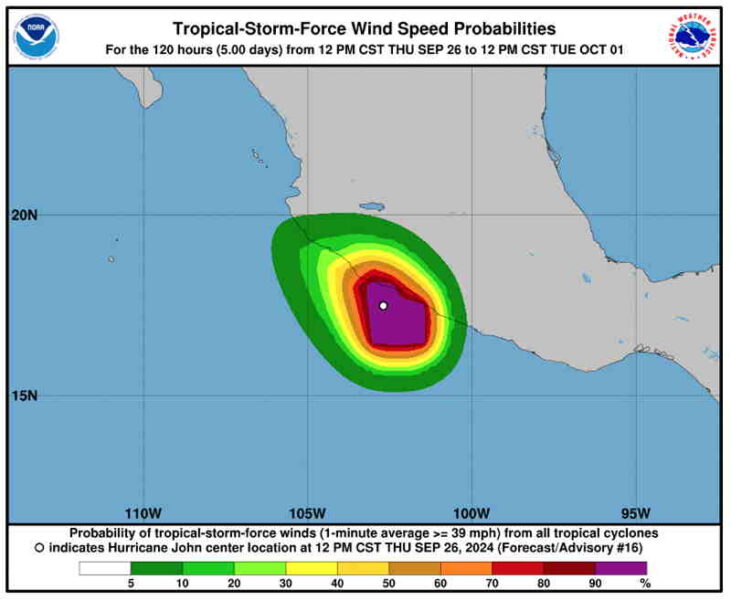
Acapulco and the Acapulco Yacht Club are still recovering from Hurricane Otis last year. We’ve heard from Ricardo Brockman this morning that while there is lots of rain, causing damage and flooding and blocking streets, the yacht club has fared fine with Hurricane/Tropical Storm John. Other areas along the coast like Zihuatanejo, Barra and other cruising destinations are either facing the storm now, or assessing the damage after its passing.
Researchers continue to follow and evaluate how human-caused global warming is contributing to the evolution of these storms. Yale Climate Connections notes that the US has set a record with eight Cat 4 or Cat 5 Atlantic hurricane landfalls in the past eight years, from 2017 to 2024. The biggest changes include the rapid rate of change in the storms’ intensity, average overall increase in wind speeds, and more water content/rainfall due to warmer air temperatures. All good reasons to sail more and motor less.
Modern Sailing Yacht Management Services
Baja Ha-Ha Updates Part 1— Things To Know Before You Go
While the entry deadline for the Baja Ha-Ha XXX has passed — wait, you’re not completely out of luck; see the bottom of the page for details — there are 124 paid entries, with another four or five expected. That puts it right in line with last year’s 131 entries.
Here’s the fleet breakdown as it currently stands: 102 monohulls; 17 multihulls, 16 of which are catamarans; five motoryachts.
Three boats are tied for the shortest in length at 32-ft: Chris Fowler’s Ericson 32 Red Beard, Robert Davidson and Joan Mueller’s Gulf 32 Savanna, and Mike Meloy’s Catalina 32 Even Keel. These are the longest small boats in the history of the Ha-Ha. Sapphire Knight, the custom 79-ft sloop skippered by Phil Friedman, is the longest entry. There are four Catalina 42s, making them the largest number of sisterships.
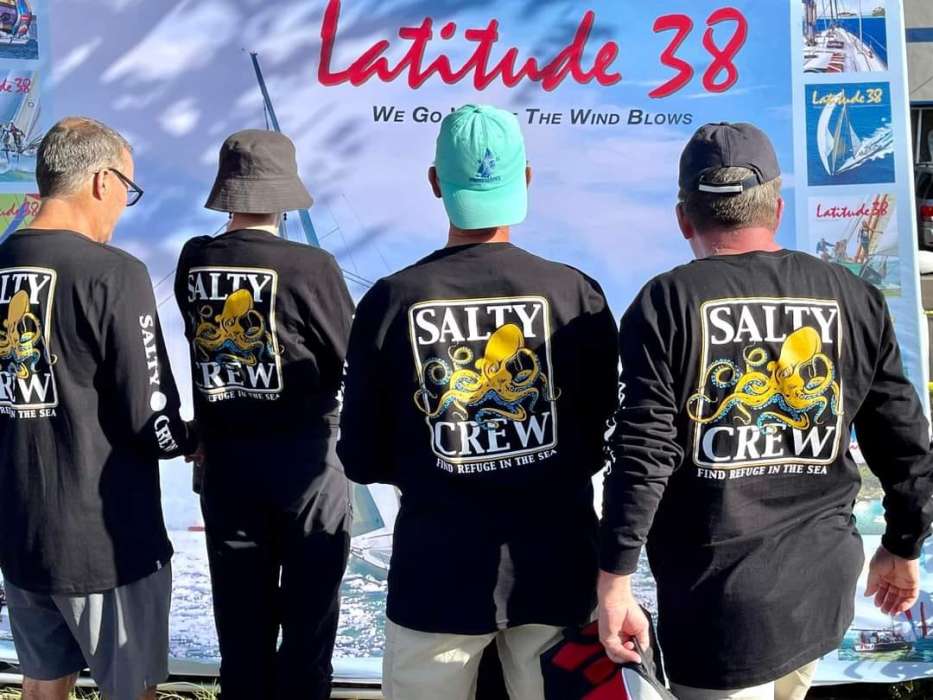
If you haven’t got a Temporary Import Permit (TIP), GET IT NOW!!!
The online system is apparently a bit overloaded, so approvals are taking longer than expected. If your boat were to have some sort of issue, you might not have time to get it fixed and start with the Ha-Ha fleet. And don’t think you can sail into Mexico without a TIP. These aren’t the old days. By now, all Ha-Ha entries should have been given instructions on how to get a TIP two, if not three, times.
Boater’s card or license.
One of the things that some navy port captains are requiring is a “captain’s license” for someone on every boat. This has been a Mexican law for ages, but it was never enforced. But that’s exactly what the port captain in La Cruz, and likely other places, is asking for.
Before you freak out, they are not asking for a US Coast Guard “captain’s license,” as they will accept boater cards from states such as California and Washington. There is a small fee for them. Or you can get one for free from BoatUS. The downside of these online tests is that there is a long mandatory pause between questions, so they make you take almost four hours out of your life.
So far, only one person per boat has needed such a card or license, although it’s best if it’s the captain or owner, because technically there always has to be a person onboard with such a “license.”
If you blow this seemingly silly requirement off, don’t blame us if you find yourself in hot water.
First-Timer’s Guide errors.
Capt. Pat Rains, whom we first met in Puerto Escondido way, way back in 1977, reports there are a couple of errors in our First-Timer’s Guide to Mexico.
Pat reports that her Mexico Boating Guide was last updated in 2023, not 2015, and that a newly updated version will be hot off the press on October 10. She says that In the future her guide will be updated each October. In addition, she reports that the First-Timer’s Guide has it wrong on a couple of unique Mexican winds.
“An elefante is a strictly local offshore blast of cold wind focused down onto nearby waters of the upper Sea of Cortez,” she writes. “An elefante can reach out maybe 10 miles from a near-coastal mountain, but the powerful blast actually originates as northwesterlies on the Pacific side of Baja. Because elefantes blast down narrow ravines in the coastal cliffs, some folks call them Gap Winds.
“A chubasco, on the other hand, starts over mainland Mexico as a low-pressure mass of tropical thunderstorms that build up thunderheads during the afternoon. Then, as the sun goes down, temps drop, and the rain and windstorms tumble down onto the eastern side of the Sea of Cortez and out 20 miles — sometimes even crossing all the way across the Sea of Cortez to Baja.
“Both of these WX terms are clarified in my little red book, MexWX: Mexico Weather for Boaters.”
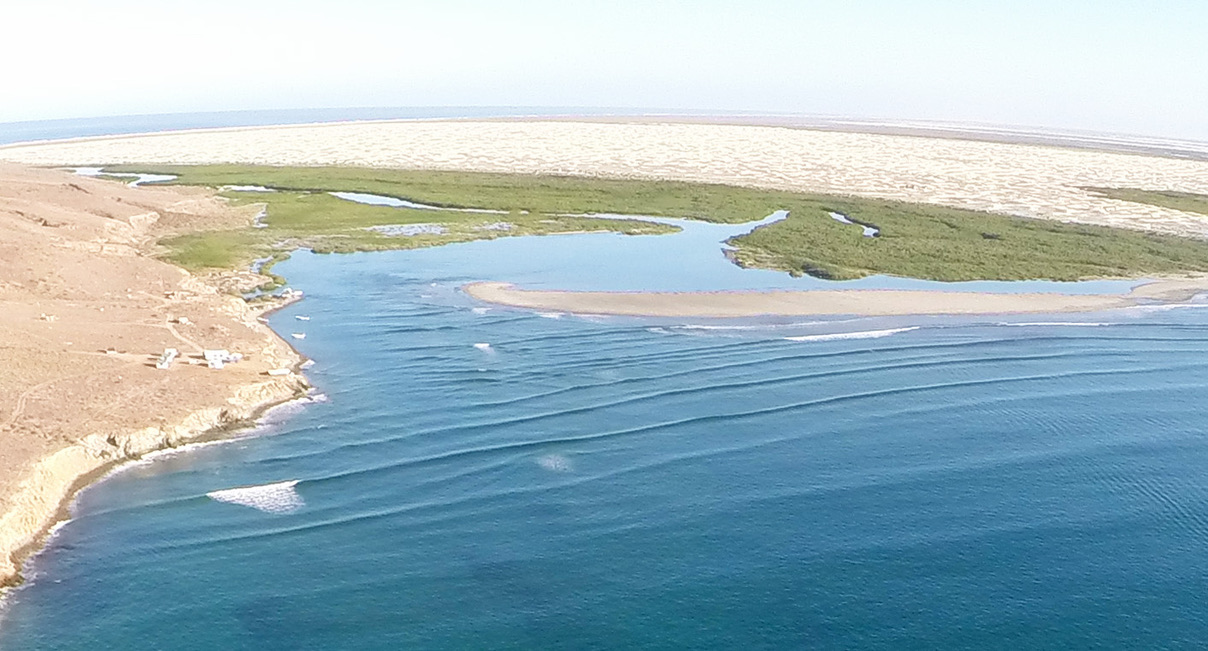
Finally, the deadlines to sign up for Baja Ha-Ha XXX
As you know, the deadline was officially September 4, two months before the start of the Ha-Ha. That has passed, of course. But because the Poobah hasn’t wanted to exclude anyone, in the past he’s allowed skippers to sign up as late as a day before the start. But those were the good old days, when life was simple.
If you know anyone who wants to sign up, please let them know that they may have to start from, or stop in, Ensenada on the way.
To check into the country with our agent in Bahia Santa Maria, all documents must be in by October 11. In some special circumstances, passport copies and the TIP may be submitted right up until the day we leave, with prior approval.
The Poobah and Assistant Poobah are looking forward to sailing south with you on what very well might be the last Ha-Ha.
We’ll share more updates in Part 2 next week — stay tuned. In the meantime, you can learn more about cruising to Mexico at our Heading South page.
Cal Sailing Club Introduces Sailing on the Bay
Ever wonder about those dazzling sails buzzing around on the Bay? The Cal Sailing Club (CSC) monthly Open House/Introductory Sail gives you a chance to find out! Cost: zero. Fun: limitless.
Latitude 38 was on hand last Sunday, September 22, under an azure, cloudless sky, to support and witness adults of all ages, singles, families, and plenty of smiling children (must be 5 years old and accompanied by an adult) enjoying perhaps their first experience on a sailboat! The end-of-summer heat was pleasantly tempered by substantial breezes while dedicated members of CSC conducted 195 members of the public on free introductory sailing cruises through the South Sailing Basin in Berkeley. The sails were aboard their fleet of small and nimble dinghy sailboats, and larger keelboats.
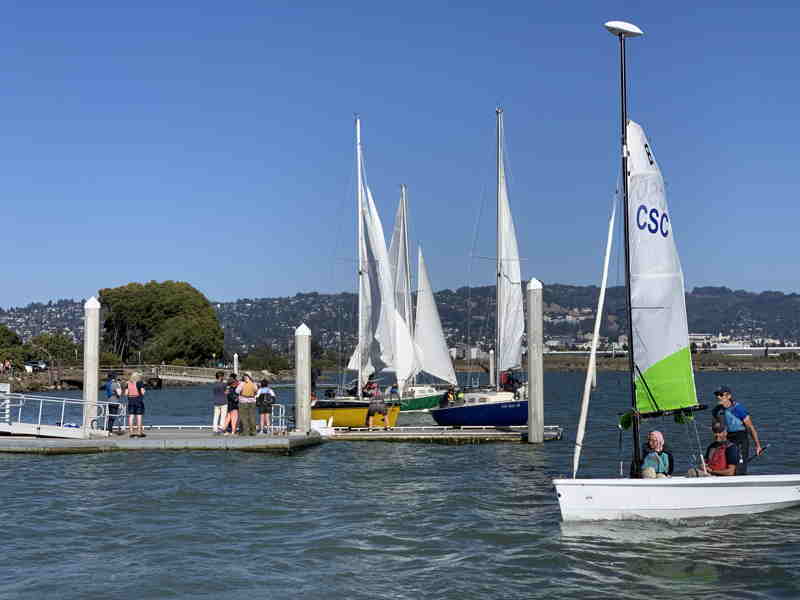
Sailing and windsurfing are often regarded as elite sports for the financially privileged; not so in Berkeley, CA, where CSC, a volunteer-run cooperative, has for decades made water sports available to all. Long known as The Beating Heart of the Berkeley Marina, Cal Sailing Club welcomes everyone through low-cost and no-cost access to membership, and ongoing free community events such as the aforementioned monthly open houses, and youth rides.
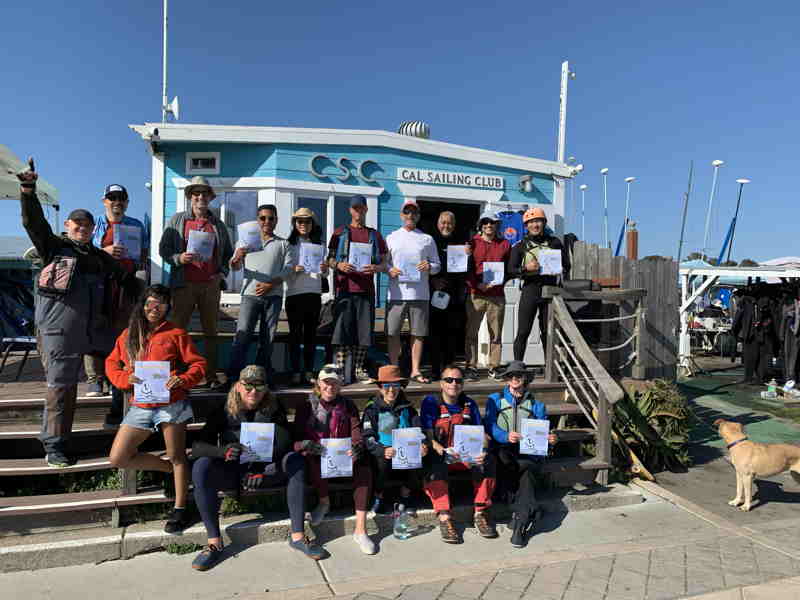
Almost all Open Houses are held from 1-3 p.m. on Sunday afternoons (and sometimes on Saturday to coincide with other activities at the Marina). Sign up in front of the clubhouse between 1-2:30 p.m.
Countless salty S.F. Bay sailors got their start by learning how to sail at CSC. The club boasts 1,100 annual active memberships and 19,026 members since 2009, and last year alone gave 2,942 lessons in both sailing and windsurfing.
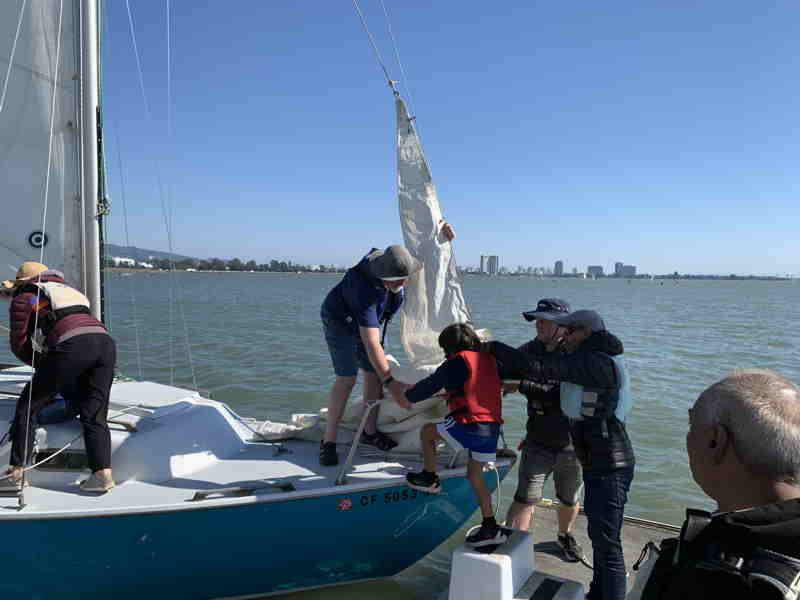
Latitude 38 is passionate about getting more people out sailing, and the monthly CSC Open Houses are a great way to (sometimes literally) get your “feet wet” in the noble sport. CSC has given over 1,380 free rides to the public this year, a number that is up 10% from 2023.
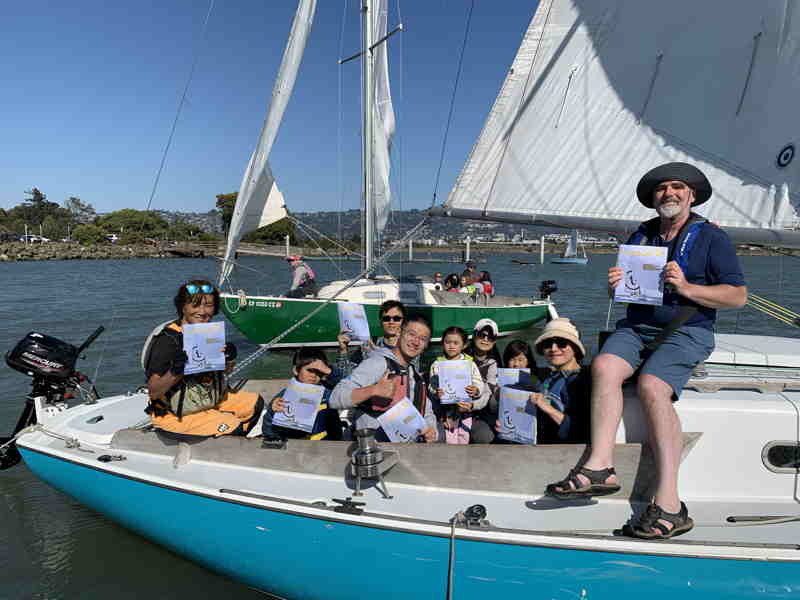
If you want to be one of the lucky visitors to experience superb views of the Golden Gate and the Berkeley waterfront during CSC’s monthly Open Houses, you can do so from April to November. The last Open House of the year will be on Sunday, October 20 — come on out, and you can pick up your free copy of the latest edition of Latitude 38 while you are there!
CSC is just east of the Shorebird Center, at 124 University Ave. on the Berkeley Marina, facing Emeryville, about ¼ mile before the Berkeley Pier. There’s plenty of parking for cars and bikes, and AC Transit stops just opposite the club. Be sure to ask the bus driver if the bus goes to the Marina. More info can be found on CSC’s website here: https://www.cal-sailing.org/.
Where does sailing take these sailors? You can read about Marie and Yalcin, who met sailing at CSC, bought a boat, and sailed from Berkeley to France, in our August 2022 and June 2024 stories written by CSC grad, volunteer and Latitude 38 contributor Heather Breaux.
Cal Parks and Recreation Announces Open Grant Programs
The California Parks and Recreation’s Office of Historic Preservation (OHP) is excited to announce that nearly $330,000 is available through a new grant program for the preservation and interpretation of California’s irreplaceable maritime heritage. OHP is now accepting applications for the grants, which are funded by the National Park Service (NPS) through the National Maritime Heritage Grants program, for the stewardship and preservation of historical and archaeological resources associated with the maritime history of California.
The primary goal of the grant program is to assist with and promote the active preservation and use of California’s maritime heritage properties. The program will achieve this by supporting the preservation of resources that are historically underrepresented and/or of statewide or national importance, and by providing increased opportunities for the public to visit and learn about historic properties related to maritime history.
“With the rich and vast maritime history in California, it is especially fortunate to offer this new grant opportunity to our partners as they work tirelessly to celebrate and commemorate our shared past,” said California’s state historic preservation officer, Julianne Polanco.
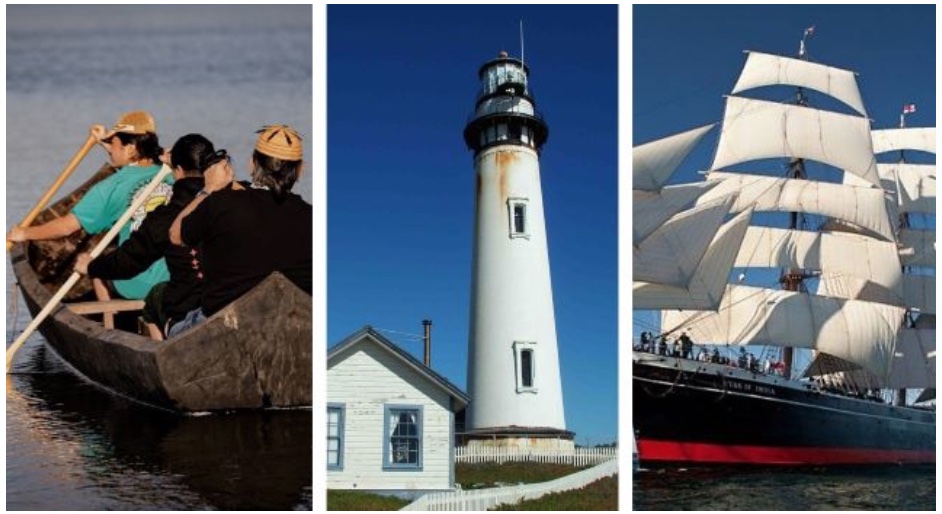
The maritime heritage grants program is designed to support various maritime heritage education and preservation projects that focus on three broad categories of historic maritime resources: historic maritime properties, maritime heritage collections and traditional maritime skills.
Grants are available to public agencies, nonprofit organizations and California Native American tribes for preservation or education/interpretation projects throughout the state, and will be required to be matched on a one-to-one basis.
Currently, there is funding for one round of grants, with applications due by 5:00 p.m. Tuesday, November 12.
Grants are available in two categories:
Preservation Projects: $98,500 available, and subgrant award amounts may range from $10,000 to $50,000 (for total project costs of $20,000 to $100,000). An example of a previous NPS grant awardee under this category is Central Coast Lighthouse Keepers, which received a $25,000 grant in 1998 to assist in the preservation of the Point Sur Lighthouse’s lantern room and upper galley.
Education Projects: $224,415 available, with subgrant award amounts ranging from $5,000 to $40,000 (for total project costs of $10,000 to $80,000). Under this category, as an example, the Santa Barbara Maritime Museum received $35,000 in 2015 to fund the development of the Spirit of Dana Point Tall Ship Overnight Education Program.
A list of previously funded projects can be found on the NPS National Maritime Heritage Grants Program History website. OHP expects to award grants by March 1, 2025, with projects needing to be completed within two years.
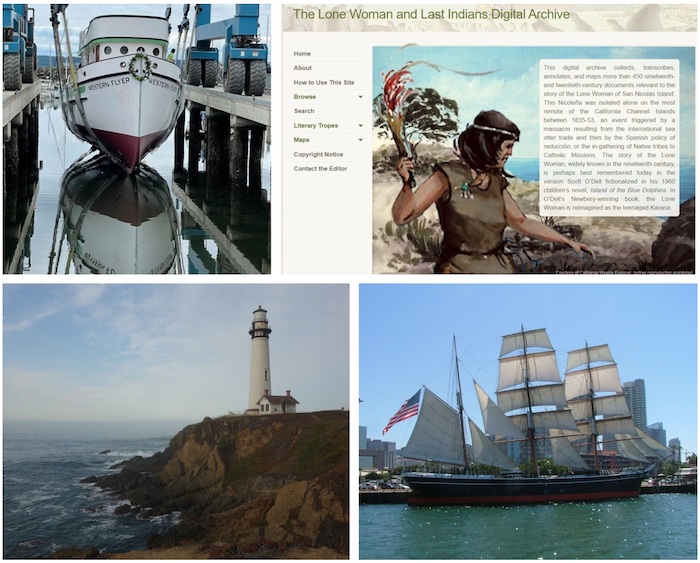
To learn more about the California Maritime Heritage Grants program and to download forms and guidelines to apply, please visit the OHP website at ohp.parks.ca.gov/maritimegrants.
——————————————-
California State Parks Division of Boating and Waterways (DWB) is offering $1.4 million in grants to enhance recreational boating safety through on-the-water boating safety education to the public. The funding is available to local public agencies, nonprofit organizations, and colleges/universities operating within California.
Grants can be used to purchase boating equipment and supplies, provide student scholarships for on-the-water boating courses, and offset costs for boating instructor training and boating safety events.
The deadline to apply is Friday, October 25, at noon. Interested applicants should first review the FAQs listed on DBW’s website to determine if they meet the grantee eligibility requirements. Applications must be submitted through the division’s online grant application system. Grant recipients are anticipated to be awarded in early 2025.
DBW will rank and score each application based on its demonstration of the applicant’s ability to safely and effectively teach on-the-water boating safety courses and enhance boaters’ knowledge of boating laws, practical handling of vessels, weather and water conditions, and other boating-safety information.
The DBW administers this grant with funding from the federal Sport Fish Restoration program and the Boating Trust Fund Recreational Boating Safety Grant, which is managed by the United States Coast Guard.
Since the late 1970s, DBW has awarded nearly $30 million through this annual grant process to promote on-the-water safety education throughout California. On average, 35–40 recipients receive funding each year.
DBW hosts two in-person meetings with aquatic center directors each year to share information on submitting competitive grant applications. Meetings this year are in Berkeley on Sept. 25–26 and in San Diego on Oct. 8–9.
Detailed information regarding the Aquatic Center Education Program and other grants is available on DBW’s website.
Barton Marine — The Bow to Stern in Sailboat Hardware
Made by Sailors for Sailors, Barton Marine has designed and manufactured sailboat hardware in England since 1948. Our range extends over 1800 products providing value and performance for racing and cruising mariners worldwide including from our US base in Virginia. The Barton range includes contemporary marine grade composite blocks, ball bearing performance wooden blocks, and an exclusive Tufnol block selection. The full range of low friction eyes, cam cleats, track and car systems, clutches, winches, Boomstruts, sailing kits and hundreds of accessories sell in over 35 countries globally to owners and boat builders alike. If you have not discovered the Barton range, visit BartonUS.com to explore and find your local dealers.

